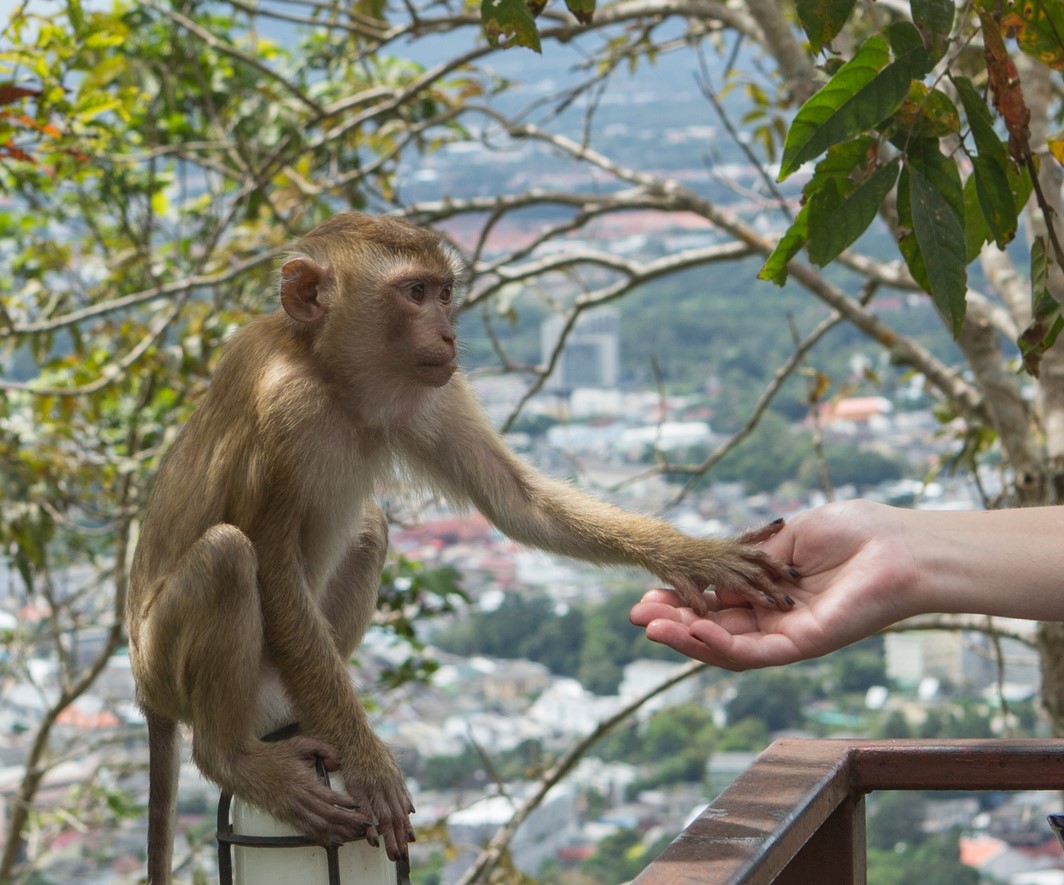
On the 160th anniversary of the publication of On the Origin of Species, Bryan Gitschlag looks the role of cooperation in evolution from the molecular to species levels.
Hi everyone,
Today (Nov 24th) marked the 160th anniversary of the publication of Charles Darwin’s landmark book On the Origin of Species, in which he introduced the world to the idea of evolution by natural selection.
I want to commemorate this occasion with what I hope will be a little bit of mind-blowing perspective on life from the world of evolutionary biology…
What if I were to tell you that the origin of life, the evolution of multicellular life forms, and the rise of civilization are different points on the same phenomenological continuum? In other words, they are different manifestations of the same phenomenon, at different levels of scale.
The phenomenon in question is called the “evolutionary transitions in individuality,” and this is essentially what’s happening in every case: a group of entities that replicate independently (and undergo natural selection) adopt the phenomenon of cooperation, in which they collectively give rise to a larger entity that replicates as a cohesive unit.
Take for example, the origin of life. Encoded in the DNA of a living organism are all the traits that an organism inherits from its ancestors (in modified form due to mutations), and those traits help the organism survive and reproduce. So, in the most basic sense, a living organism is a collection of DNA molecules along with all the things that those molecules “do” to ensure that they continue to get replicated. Even the simplest living organisms that we’ve discovered have hundreds of genes, which work together to encode the traits that engulf and protect the genes. Thus, origin-of-life research is largely focused on understanding the nature of things that could realistically fulfill the role of being evolutionary precursors to the simplest bacterial cell… things such as molecules that spontaneously self-assemble from simpler building blocks in a watery environment [1, 2], as well as self-replicating molecules [3-5].
Thus, the origin of life is likely to have involved simple mutating replicators—molecules that make more copies of themselves—that interacted favorably with each other and formed a division of labor, for example by catalyzing each other’s replication.
A cooperative division of labor can bring benefits of efficiency, which can be crucial in the struggle for survival and is therefore understood to play a pivotal role in the origin of not only life itself but also in the evolution of multicellular life forms from previously single-celled ones [6, 7].
Likewise, social communities are themselves things that emerge when individual organisms cooperate and form a division of labor. Consider for example terms like “soldier” and “forager,” which apply to different roles fulfilled amongst the members of a beehive just as they can apply to human societies. The general phenomenon by which different members of a species work together to ensure the survival and continuity of their gene pool is known to biologists by the term “cooperative breeding.”
Under a wide range of conditions, and for billions of years, natural selection has favored cooperation for mutual benefit, which is understood to be a common theme underlying every major evolutionary transition, from the origin of the earliest single-celled organisms to the origin of multicellular organisms to the emergence of social groups [8]. Thus, the inherent advantages of working together for the common good help us understand our place in the universe in everything from the origin of life itself to the nature of the world around us.
Thank you for reading.
References
Cafferty BJ, Fialho DM, Khanam J, Krishnamurthy R, Hud NV. Spontaneous formation and base pairing of plausible prebiotic nucleotides in water. Nat Commun. 2016;7:11328.
Cafferty BJ, Gállego I, Chen MC, Farley KI, Eritja R, Hud NV. Efficient self-assembly in water of long noncovalent polymers by nucleobase analogues. J Am Chem Soc. 2013;135(7):2447-2450.
Carnall JM, Waudby CA, Belenguer AM, Stuart MC, Peyralans JJ, Otto S. Mechanosensitive self-replication driven by self-organization. Science. 2010;327(5972):1502-1506.
Liu Y, Sumpter DJT. Mathematical modeling reveals spontaneous emergence of self-replication in chemical reaction systems. J Biol Chem. 2018;293(49):18854-18863.
Sievers D, von Kiedrowski G. Self-replication of complementary nucleotide-based oligomers. Nature. 1994;369(6477):221-224.
Michod RE, Viossat Y, Solari CA, Hurand M, Nedelcu AM. Life-history evolution and the origin of multicellularity. J Theor Biol. 2006;239(2):257-272.
van Gestel J, Vlamakis H, Kolter R. From cell differentiation to cell collectives: Bacillus subtilis uses division of labor to migrate. PLoS Biol. 2015;13(4):e1002141.
West SA, Fisher RM, Gardner A, Kiers ET. Major evolutionary transitions in individuality. Proc Natl Acad Sci U S A. 2015;112(33):10112-10119.





It is unsatisfactory to have a theory that can only explain cooperation among relatives. We also observe cooperation between unrelated individuals or even between members of different species. Such considerations led Trivers ( 10 ) to propose another mechanism for the evolution of cooperation, direct reciprocity. There are a repeated encounters between the same two individuals. In every round, each player has a choice between cooperation and defection. If I cooperate now, you may cooperate later. Hence, it might pay off to cooperate. This game theoretic framework is known as the repeated Prisoner’s Dilemma.